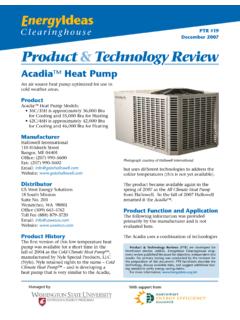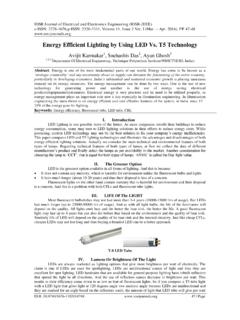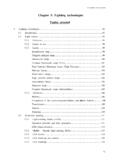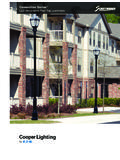Transcription of Restaurant Energy Saving Tips - EnergyIdeas.org
1 Restaurant Energy Saving TipsMost restaurantsare Energy -intensive facilitieswhere significantenergy-savingopportunities existthrough wiseoperation the following tips to help reduce your Restaurant sdemand for Energy . Some of these tips require capitalinvestment, while others require only changes inoperation and maintenance. Most of these tips are basedon two principles:Turn it off if it does not need to run. For example, by eliminating one hour perday of broiler idle, you can save $200 it is time to purchase new equipment, choose the most efficientequipment that you can. Look for the Energy STAR label on appliances Switch to fluorescent lighting. Fluorescent lights use 1/4 to 1/3 of the energythat standard incandescent lights use, Saving up to $34 per year per lamp on yourlighting bill. And, because fluorescent lights do not generate heat like incandescentlights, for every watt saved in lighting, you can also save a watt on air kitchen areas have old four-foot, T-12 technology fluorescent lamps and magneticballasts, they should be replaced with more efficient electronic ballasts and T-8 lamptechnology.
2 Your local utility may have incentives to assist with this. Use compact fluorescent lighting (CFL). If you use dimmable swag lamps at thetables, consider replacing them with dimmable CFLs. Dimmable CFL lighting costsmore initially, but will last as much as ten times longer than incandescent lighting andis available in a variety of color temperatures to enhance the look of the table service. Convert exit lighting to LED (light emitting diode) technology. Replacing your oldincandescent exit lighting with a low Energy LED retrofit kit can save $22 per year persign, a savings of up to 88 percent. Install lower wattage lamps. In areas where it is impractical to use fluorescent lighting,consider relamping fixtures with high efficiency halogen lamps that use lower to high-pressure sodium or low-wattage metal halide lamps for outdoor lighting. Install occupancy sensors, timers and photo sensors. One of the best ways to lower yourenergy costs is to turn things off when not in use.
3 Install occupancy sensors in non-essentialareas such as walk-in coolers and storerooms, photo cells on parking lot lighting and timerson other outdoor Heating Fully load the dishwasher. It takes as much heated water to wash a partially full dishwasheras it does a fully loaded one. Install low-flow pre-rinse spray nozzles. Set the water heater thermostat no higher than it needs to be: 140 F for dishwashers, but only110 F for hand washing. Consider using chemical sterilizers instead of higher water temperaturesin Energy Saving Tips2 Consider gray water heat recovery. If yourdishwasher is a continuous fill and drain, considerinstalling a gray water heat recovery system. Thissystem will recover some of the heat from thedrain water and use it to reheat the supply waterto the Ventilation Retrofit exhaust hoods with a two-speed the entire grill/fryer is not being used, youmay be able to lower the ventilation rate over theappliance and reduce both make-up air and theenergy needed to condition it.
4 Locate exhaust hoods on walls. Wall-mountedexhaust canopies require lower air velocities to dothe same job. Lower air velocities mean smallerfan motors and less make-up air to heat or cool. Install smart exhaust hood controls. Mostkitchens operate at less than 25 percent capacityduring the day, but the exhaust hood runs at100 percent capacity. These controls sense whenthe exhaust hood needs to be on, based onexhaust air temperature and smoke load using atemperature and an optical and Cooling Use the thermostat factory setpoints. Leave thethermostat settings at 76 F for cooling and 68 Ffor heating. Each degree of heating or cooling cancost an additional four to five percent in energycosts. Leaving the thermostat at the factorysetpoints will maintain comfort without breakingthe bank. Use the night setback feature of the the thermostat to bring your Restaurant totemperature no earlier than Clean air conditioning and refrigerationcondenser/evaporator coils every three months.
5 Check the refrigerant charge and fix leaks ifnecessary. Regularly clean or replace air filters on ventilationand heating/air conditioning equipment. Cleangrease traps on ventilation equipment. Check freezer and walk-in seals for cracks andwarping. Replace if EnergyIdeas Clearinghouse providesinformation on a broad range of energytechnologies for customers of Pacific Northwestutilities. EIC provides a searchable website and hasa team of Energy specialists ready to respond totechnical information requests by phone or by the Northwest Energy : 2003 Washington State University CooperativeExtension Energy Program. This publicationcontains material written and produced for publicdistribution. You may reprint this written material,provided you do not use it to endorse a commercialproduct. Please reference by title and creditWashington State University Cooperative ExtensionEnergy Program and the Northwest EnergyEfficiency Alliance.
6 WSUCEEP03_022 March 2003









